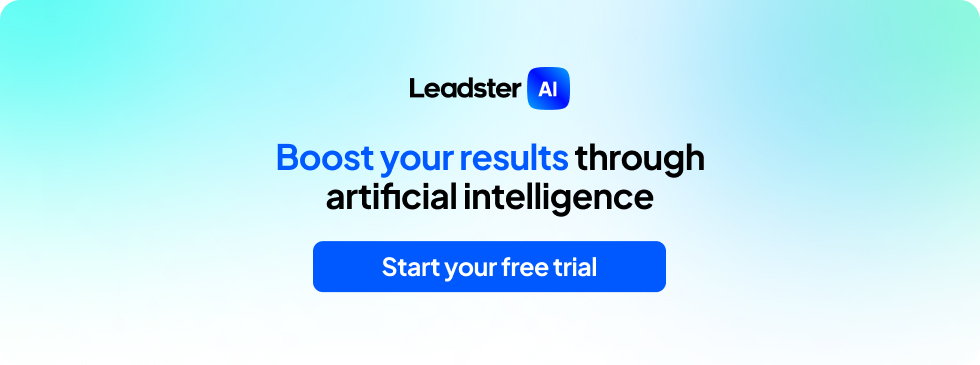Lead Qualification: Step-by-Step Guide + Expert Tips
Here’s some great news: your company is finally managing to generate the number of leads that were set as targets after a lot of work and applying the best strategies.
But when it comes to the quality of these leads, are you satisfied?
Many marketing and sales departments struggle with lead generation, especially when it comes to unqualified leads.
Generating leads is important and often the first step. But it’s just the first step. Once you overcome that initial barrier, you need to start thinking about the type of leads you are generating.
If that’s your case, know that you urgently need to improve the lead qualification process in your strategy.
This article is about that. I’ve brought together a theoretical overview with everything you need to know about lead qualification.
And of course: practical tips and tools for you to start working on it today.
All set? Then let’s get started:
What are Leads?
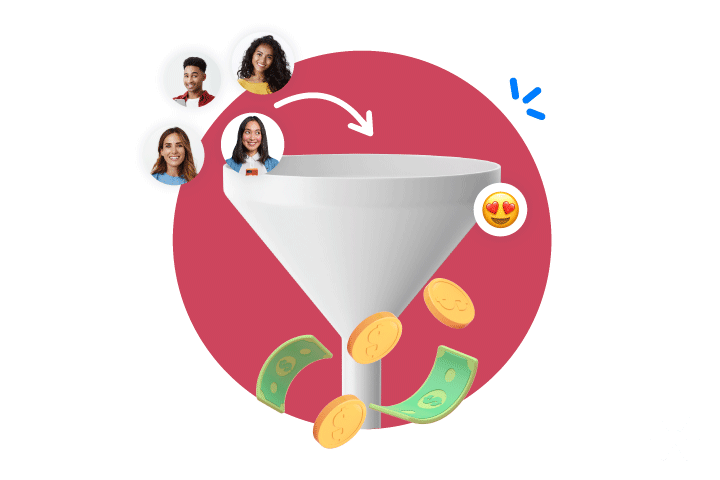
In the marketing and sales segment, a lead is a potential consumer who has already provided personal and contact information to a company.
As soon as information like name, email, and phone number is provided, you can already call the user a lead, and it is the leads that make up the contact base – your company’s database.
But it’s also important to remember that this lead, especially in post-LGPD Brazil, must also have given their consent to be approached by your marketing.
This process occurs because the visitor is interested in something your brand offers — and it’s not always a product or service — so they provide this data as a form of exchange.
Your brand’s offer will depend on the stage of the marketing funnel.
It can be exclusive content, a contact return, a question answered, a product demo, an offer, etc.
We have a very comprehensive article that further expands the concept of a lead. Access it through the link below:
➡️ Marketing Leads: What is a Lead and How to Generate Leads in 2025
What Are Qualified Leads?
Qualified leads are the contacts most interested in hearing what your company has to say.
It doesn’t necessarily mean they are ready to buy or hire, but they have already shown more interest in your brand’s communication and fit well within your Ideal Customer Profile (ICP).
However, unfortunately, not every lead conversion represents someone genuinely interested in closing a purchase or contract.
In fact, many of these leads will not become customers, and many of them will not even maintain a connection with your brand.
Often, a lead will not progress through the sales funnel.
And many other times, the lead is not yet ready to buy and needs to go through what we call in Marketing the nurturing and qualification process.
There are some classifications for qualified leads. We expand on each of them in the sections below. Follow along:
MQL
MQL stands for Marketing Qualified Lead.
Here, “marketing” refers to two things simultaneously: your marketing efforts and the marketing department itself.
This is important to distinguish from SQLs, for example, which are qualified by the sales team and are also ready to be approached by salespeople.
The MQL is the most basic lead in a company. It is the lead that has received the minimum level of qualification to move forward in your sales pipeline.
Usually, this basic information is related to the fit between the lead and your brand and business objectives.
If the lead aligns with the target audience and ICP, they essentially pass through an initial Lead Scoring process that further qualifies them.
➡️ Learn more: What Is Lead Scoring and How to Apply It to Optimize Conversions
But as this lead is nurtured, they move forward in the funnel. The next stage is becoming a SAL. Learn more below:
SAL
There is an intermediate level of lead qualification between MQLs and SQLs: Sales Accepted Leads, or leads accepted by the sales team.
These are the leads that have just been qualified by marketing — the MQLs. In other words, those that will start being handled by the sales team.
This distinction becomes necessary because you will notice in practice that there is a long journey between MQLs and SQLs.
When you determine that there are only MQLs and SQLs, it becomes challenging to categorize those MQLs that are being worked on by the team but have not yet become SQLs.
Speaking of SQLs, let’s talk about this type of lead next:
SQL
A Sales Qualified Lead, or SQL, is a lead that has already been qualified by the sales team.
In practice, this means that these leads have already gone through all the marketing processes and most of the sales processes and are ready to be approached with a commercial proposal.
In Inbound Marketing strategies, this is the lead that has already gone through an email marketing flow created directly by the sales team, for example, with a focus on conversion.
But it’s also important to note that this lead doesn’t necessarily need to be worked on by a team.
Often, in the lead generation process itself, the lead can provide information that instantly classifies them as an SQL.
For example, during the conversion of that visitor to a lead, they inform your lead generation chatbot that they have already researched other brands, even had meetings with other sales representatives, for instance.
And all the qualifying information indicates that this lead is highly suitable for your company. In that case, by the Lead Scoring methodology itself, this lead moves to more advanced stages automatically.
🤿 Dive deeper: 19 Best Marketing Automation Tools for 2025
This highlights that lead qualification techniques do not need to be linear — and they shouldn’t be.
Your processes need to be structured in a way that instant SQLs are automatically identified and passed on to the sales team as quickly as possible.
This becomes even more evident when we talk about PQLs. Learn more about them below:
PQL
A Product Qualified Lead, or PQL, is a lead qualified by the product.
This is much more common in SaaS business models, where a product-focused growth strategy is typically applied.
It’s our own case here at Leadster. Our website and campaigns are designed with maximizing free trials in mind.
In other words, our main objective is to convert visitors into users of our free trial.
Once that visitor takes the test and comes into direct contact with our product, they become a PQL — someone who not only knows our brand but has firsthand experience with our tool.
PQLs are the most desired types of leads for companies that have some kind of digital product. And they are the leads that these companies work the hardest to generate.
Usually, in the product-led growth approach, these leads have dedicated nurture flows and are a top priority for both the marketing and sales teams.
In many cases, even, SaaS companies don’t have direct sales teams calling PQLs. They may have customer success consultants who often accompany you from the first contact until after the contract is closed.
What Is Lead Qualification?
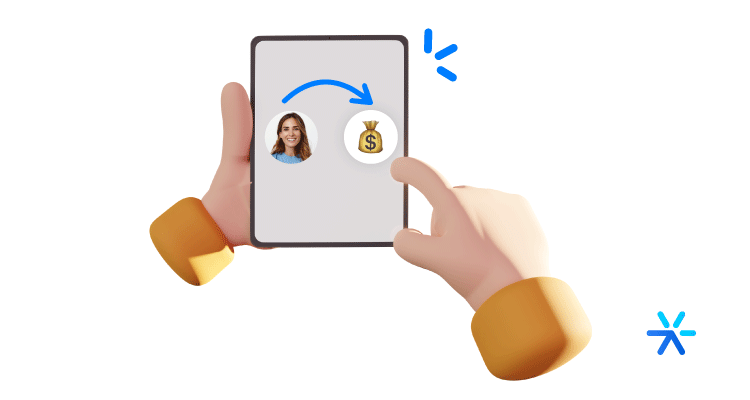
Lead qualification is the identification and segmentation of the contacts in your database who are more likely to become customers of your brand.
Qualifying your leads means giving the sales team the opportunity to approach them at the best time to close a purchase or contract, thus optimizing the sales process and achieving better results.
With lead qualification, in addition to focusing on those who are ready to be approached by a salesperson, you do not exhaust contacts who may be interested in the future but would distance themselves if they felt bothered by a sales contact at the wrong time.
Below, I have outlined some of the most commonly used techniques for lead qualification in practice. Follow along to learn more:
What is Lead Scoring?
Lead Scoring is a technique that seeks to systematize the qualification of leads, making the work practical and 100% measurable.
Here’s how it works: you create a small list that indicates how close a lead is to closing a sale with you, based on their interactions and profile.
For example: you determine that after 3 positive email interactions, a call with a sales rep, and a presentation meeting, your lead is ready to receive a direct offer.
At the same time, you establish that your lead needs to be within age range X, from demographic Y, and located in the same state as you.
Each of these pieces of information and interactions receives a score that you define. For example: your lead received an email with a valuable resource, opened it, and read it: they receive 3 points.
After that, your lead independently sought out another more in-depth resource and also downloaded it: they receive another 5 points.
And just by being in the demographic of your ideal consumer profile, they already gain another 5 points.
When your lead reaches a certain score, you can already consider them as qualified.
And the score can also indicate the type of lead — whether they are an MQL, an SQL, etc.
This work is usually done within an automation flow, with the support of a marketing automation strategy.
We have two articles on the subject that I have already linked throughout the article, but I have separated both below to make it easier for you to navigate. Reading both is quite important to understand what Lead Scoring is, okay?
➡️ What is Lead Scoring and How to Apply It to Optimize Conversions
➡️ Marketing Automation: How to Do It and Best Tools
What is Lead Nurturing?
But look: the work of Lead Scoring needs to be accompanied by lead nurturing, which is the proactive way to seek the qualification of the lead.
You can’t just wait for your lead to qualify themselves. There are several other brands doing the same work as you at this exact moment.
Lead Nurturing is a technique that seeks to encourage the lead to have these interactions and share these qualification details.
Lead Scoring and Lead Nurturing work together. Nurturing drives the entire strategy that will culminate in producing the materials with which leads will interact.
And as these interactions occur, your lead will advance through the Marketing Funnel according to the scores you set.
We have an entire article on Lead Nurturing that is worth checking out. See it below:
➡️ What is Lead Nurturing and How to Create Your Nurturing Flow
Can a Lead Already Arrive Qualified?
Just a quick note: leads can indeed arrive already qualified!
When we talk about these techniques and funnels, it may seem that the conversion and qualification work of leads is absolutely linear.
They always arrive unqualified. They contact your brand, convert, and gradually qualify through Lead Nurturing, guided by Lead Scoring. And that’s it!
But the reality is quite different. You will find leads that will take weeks to reach the MQL stage. And you will find leads that, in the first interaction, already demonstrate being SQLs.
Someone who enters your website directly, for example, and requests a quote.
This person, being from your Ideal Customer Profile, is already 100% qualified and can (and should!) receive a proposal as quickly as possible.
So, always think of this linearity as part of the technique, but remember that these leads can arrive at any stage of your Marketing and Sales Funnel, and with varying levels of prior qualification.
🤓 Read also: What is a Sales Funnel? Stages, Methods, and 9 Tools
What Are the Types of Qualification?

We can say that there are two ways to qualify a lead, according to the buying stage they are in when they enter your contact base.
This buying stage is the stage the lead is in within the Marketing and Sales Funnel of your company.
Just to quickly recap: the Funnel is usually composed of three classic stages — the Top of the Funnel, the Middle of the Funnel, and the Bottom of the Funnel.
Understanding this point is interesting because it justifies what we were just discussing about leads that already arrive qualified.
“Arriving qualified” is the same as arriving in more advanced stages of the Sales Funnel. The main engine of a lead’s movement through these stages is their qualification.
And speaking of the qualification itself, let’s better understand the difference between superficial qualification and in-depth qualification?
Superficial Qualification
If a lead converts through a hook from your brand but is not yet ready for a commercial approach, they can be worked on by the marketing team for that qualification to occur.
Here, Content Marketing and Inbound Marketing strategies are fundamental.
Superficial qualification is the first moment of conversion from visitor to lead. You still don’t know much about them — only that they are interested in what you are offering.
“But,” you might be wondering, “isn’t that the same as a lead that hasn’t yet reached the MQL stage?” — well, yes. That’s exactly what it is. But it’s important to note that not every superficial qualification will generate an MQL.
Notice that lead qualification doesn’t always “work” — that is, in some cases, it won’t turn into a sale.
That’s why the Marketing Funnel is called a Funnel: many leads at this superficial stage may not be interested in your brand and product but rather in the conversion material itself.
For example: let’s say you are an agency and offer briefing templates for download.
Different professionals can use this material: freelancers, other agency owners, beginner copywriters with no buying power, etc.
Lead qualification is also concerned with excluding leads with low potential to become customers, advancing in-depth as the Funnel stages progress.
In-depth Qualification
In-depth qualification happens when you can combine the concepts of ICP — Ideal Customer Profile — with Lead Scoring.
In in-depth qualification, you know both about the lead’s interest in the material you are providing and their alignment with the Customer Profile your company is targeting.
This is done in various ways, depending on how your company generates and qualifies leads.
A more sales-oriented approach, for example, will involve the sales team, specifically in pre-sales.
The approach should focus on the lead’s need, and the role of the pre-sales rep or SDR is to understand if the company’s solution meets that need.
Continue reading: How the Pre-Sales Area Can Improve Your Results
How to Qualify Leads Through Marketing?
Good! Now that you understand the types of qualification in marketing.
But, how do you actually do it? That’s why we’ve already listed the two main strategies that will guide your lead qualification.
Check it out!
Lead Tracking
Lead tracking is a function present in marketing automation tools. It allows you to monitor visits, actions, and interactions each contact has with your brand.
In other words, right after the user enters your contact base, they become trackable, so you have access to the history of pages visited, emails opened, materials downloaded, blog posts visited, etc.
Through this functionality, you’ll have more information about the lead, making it easier to segment and qualify them based on the criteria you’ve already set.
How to Create a Lead Scoring Model
As we’ve discussed, Lead Scoring is a methodology used to classify potential customers.
This classification is done through a scoring system created according to predefined qualification criteria. From there, the lead accumulates points as they make new conversions and interact with the brand.
This scoring system also depends on the consumer profile, as the closer the contact is to the ideal consumer, the better their score will be.
In other words, the outcome of this method is the qualification and filtering of the most interesting leads for the sales team to approach.
Below, check out two possible Lead Scoring models:
How to Qualify Leads Through Pre-Sales?

Well, we already know how to qualify marketing leads. But what about pre-sales?
Let’s explore three strategies that can help you in this process.
SPIN Selling
SPIN Selling is a sales methodology created in 1988 by Neil Rackham, which guides the best questions a salesperson should ask to understand the scenario and, thus, apply the best sales approach with the person they are speaking to.
Its goal is to gradually lead the negotiation, allowing the consumer themselves to come to the conclusion that the offered solution is the ideal one for their problems.
The acronym SPIN stands for:
- Situation
- Problem
- Implication
- Need-Payoff
Let’s consider a quick example to better illustrate these points.
A salesperson approaches a qualified lead to move them along the sales funnel.
The first step is to think of a question. “How many visits do you get on your website today?”
The answer will vary widely. Sometimes the lead has 20 visits, sometimes 200. But this doesn’t change the next question: “How many leads do you generate from those visitors per month?”
The implication is what this problem brings: “Without generating leads, your efforts to bring more people to your website are not yielding results.”
And the conclusion is already quite clear: “The truth is you’re spending to generate traffic. And all traffic to your website needs to generate leads. In other words, you’re investing to only do half the job.”
SPIN selling is probably the most used sales tactic today, and the reason is clear in the example: each stage “pulls” the next.
Qualification Matrix
The qualification matrix is a tool aimed at increasing sales conversion in your company.
This strategy shows when the lead should be transferred from one team to another, in this case, from marketing to sales.
Your matrix can be divided into:
- With adherence
- Without adherence
- With interest
- Without interest
See the example below:
BANT
The first of the lead qualification methodologies we’ll address is BANT.
This is the acronym for four words that help us evaluate the compatibility of a lead with the offered solution.
In this methodology, the questions should be guided by:
- Budget: What is the lead’s investment value?
- Authority: What is the decision-making power in relation to the purchase?
- Need: What is the difference your solution makes for the lead’s pain?
- Timeline: How much time does the lead need to decide on the purchase or what is the urgency in resolving the problem?
ANUM
The ANUM methodology, on the other hand, directs questions for high-cost solutions.
This type of methodology is widely used in B2B and longer negotiations.
Therefore, the priority is to understand the lead’s authority in the purchase decision:
- Authority: To understand the decision-maker’s profile and their interests in the solution;
- Need: To understand if your solution meets the lead’s needs;
- Urgency: To understand how the lead prioritizes solving their problem or need related to your solution;
- Money: To understand if the budget is compatible.
CHAMP
The CHAMP model, in turn, is recommended for more technical sales, as the main criterion is to understand if the offered solution and the lead’s need converge.
The directional questions are:
- Challenge: Understanding the lead’s needs and challenges;
- Authority: Understanding the influencers and decision-makers of the purchase;
- Money: Understanding the budget for investment;
- Priority: Understanding the lead’s prioritization of the purchase or hiring.
PACT
The PACT method is focused on the lead’s pain and the consequences it brings.
Through the questions, the pre-seller directs the lead to reflect on how not solving the problem is detrimental.
The criteria for the questions are:
- Pain: To make the lead think about the problem;
- Authority: To understand the relationship and impact of the problem on the lead, as well as identify decision-making power;
- Consequence: To show the issues impacted negatively by the lack of a solution, such as costs, time, productivity, organization, etc.;
- Target profile: To know the lead’s profile and any limiting factors that may prevent them from becoming a customer.
FAINT
Is your solution the type that is not included in the lead’s budget?
Then the FAINT methodology might be interesting for your lead qualification.
With it, the pre-seller understands through the questions whether the lead has the potential to find funds for the solution, with an attractive benefit and favorable financial conditions.
- Funds: Does the lead have investment potential? Can they raise the necessary resources?
- Authority: Is the lead the decision-maker? Are they the one who can reallocate resources from another provision to purchase or hire your solution?
- Interest: Does your solution generate interest in the lead?
- Need: How does your solution meet the lead’s desires or goals?
- Timing: How soon does the lead intend to purchase?
MEDDIC
The MEDDIC methodology is one of the most recommended in B2B sales, particularly in very complex sales or those involving technology.
This is because it delves deeper into each lead and directs questions to the commercial department for lead evaluation and qualification.
- Metrics: Questions to identify the values of the negotiation, such as budget and average ticket;
- Economic Buyer: Questions to validate who the final decision-maker is;
- Decision Criteria: Questions to identify the decisive factors for negotiation and hiring. This is also where expectations for ROI are better understood;
- Decision Process: Questions to identify the entire negotiation process within that company;
- Identify Pain: Questions to identify the needs, pains, and challenges, as well as how the offered solution fits into the context;
- Champion: Questions to identify an ally within the company who believes in and will help defend the proposal.
GPTC
Another methodology widely explored in the B2B market is GPTC.
It directs questions to understand how the solution can be personalized to the lead’s needs and possibilities:
- Goals: What are the lead’s desired goals? How do they impact their daily life?
- Plans: What actions has the lead planned or are necessary to achieve these goals? The salesperson should also understand if these plans are in progress, if there have been any failures, and if not started, what is preventing the lead from taking action;
- Timing: What is the lead’s timeline for achieving the goals and solving the problems related to your solution?
- Challenges: What is the lead’s current situation? What ideal scenario do they envision in the discussed context?

How to Qualify Leads Step by Step?
Lead qualification is tied to some key points we’ll revisit:
1. Identify Your Ideal Customer Profile (ICP)
The first step to defining who a qualified lead is, is to understand the characteristics that distinguish them from the rest of your base.
Keep in mind that qualification criteria vary depending on the audience and your company’s operations, but generally, they are related to budget, authority, need, and timing.
As we saw, these 4 criteria are repeated in most methodologies used for lead qualification.
From these directions, create the ideal customer profile.
It will assist in identifying the best leads.
2. Define Qualification Criteria and Questions
Whether through marketing or pre-sales qualification, you need to define the qualification questions that will be used to gather information from the lead.
This is also important to ensure that the process is standardized and that the information collected from all leads is consistent, allowing for correct segmentation of qualified contacts.
Understanding whether a lead is qualified does not only depend on the hiring or purchase at the end of the sales funnel.
To make your day-to-day even easier, there are factors that will help your understanding of these criteria that qualify a lead.
Some of these factors are:
- Fit with the Ideal Customer Profile (ICP): Asking whether a lead truly needs or wants the solution you offer is the first step in avoiding wasted efforts on unqualified leads. If the lead doesn’t fit the customer profile you’re targeting, why invest in qualifying them when it will never lead anywhere? For example, if you serve a specific region, covering only a few cities in Bahia, but end up generating a lead from São Paulo, that contact will never become a customer. Don’t be afraid to take action and don’t cling to numbers: leads that cannot turn into customers are irrelevant to your strategy.
- Timing: The purchase timing and the length of the maturation process affect the qualification and strategy designed for it. The decision-making time for buying sneakers is different from purchasing an apartment. B2B deals have a different contract timeline than direct consumer purchases. Pay attention to this factor.
- Decision-making Power: Within your audience, are you only dealing with decision-makers, or with influencers who do not have the final say? Understanding how to classify the profile of each lead makes a huge difference in communication, hooks, and the benefits presented during the qualification process.
- Available Budget: Finally, understanding the purchasing power or the available budget for a specific purchase or hire is crucial for qualifying the lead. This allows you to determine whether the lead is a good fit for what your company offers and helps avoid wasting time on leads that lack this qualifier. Remember that this qualifier can change, so timing should also be evaluated. A lead might not have the budget this month but could have it next month. The context will guide the qualification.
3. Create Automations for Sales and Marketing
After identifying qualified leads, what should you do with them?
According to qualification criteria, lead scoring, and segmentations created, you need to decide what path these leads will follow, whether through a nurturing flow or a direct commercial approach.
These actions can (and we recommend they should) be automated using marketing and sales platforms designed for this purpose.
Attention! This is the point where the baton is passed from marketing to sales—meaning from superficial qualification to deep qualification.
4. Deepen Qualification with the Sales Team
To further enhance your qualification, it’s important to discuss your qualification criteria and questions with the sales team.
Put the qualification methods—mentioned earlier—on the table to identify which points that have not yet been addressed by marketing can be highlighted by the sales team.
Examples of B2B Lead Qualification
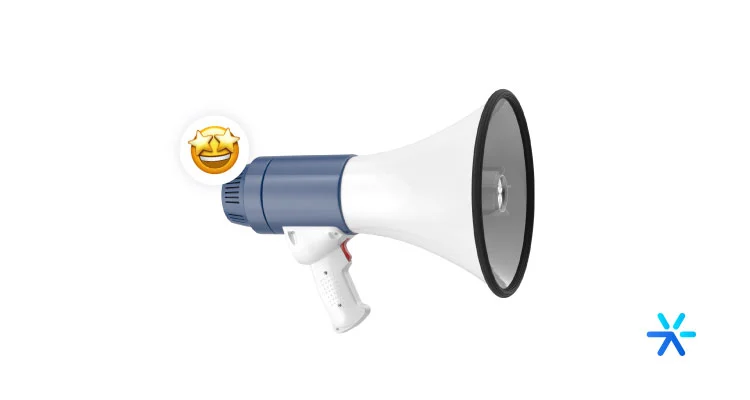
Well, it’s better to understand the theory in conjunction with real-world practice, right?
That’s why I’ve gathered a few B2B lead qualification examples to help us discuss what works and what doesn’t.
Let’s look at some case studies provided by Clearbit, an American business consultancy.
I highly recommend reading the full cases on the company’s website, as they are very detailed, and unfortunately, we don’t have enough space here to present all the information.
Let’s dive in:
Heap
Heap is a SaaS company focused on Business Intelligence.
I’m bringing their example here because the qualification model they apply is quite similar to what most Brazilian companies do today.
This model is the most basic one: qualification of leads by company size and distribution to dedicated teams.
It works like this: Heap determines a series of points in lead scoring and captures as much information as possible about their leads.
The leads that progress through the funnel and are qualified fall to the sales team as MQLs. It’s at this point that the division into dedicated teams occurs.
Heap then distributes these qualified leads to three different teams: one handles small clients, another handles medium clients, and the third team handles large clients.
This is the basic integration between marketing and sales. You could assign teams based on the qualification information, for example: this team only handles schools, and another one only handles real estate companies, and so on.
But the basic method works perfectly well, which is why it’s the most popular approach today.
Proposify
Proposify uses a similar approach but with a bit more complexity.
Their B2B lead qualification model starts on the Marketo platform, which is part of Adobe’s suite of marketing automation tools.
Lead generation is done entirely through this platform, using landing pages and forms. With a chatbot, it would work even better.
Then, these leads are passed to the organization via Salesforce, and the distribution to the sales team begins.
It’s a common pipeline we’re used to seeing, but the key difference lies mainly in how the information is gathered.
Proposify performs superficial qualification through its forms, gathering details like the number of employees in the company, the lead’s position, etc.
However, the real innovation lies in tracking lead behavior on the website—this information is used for lead scoring and qualification.
For example: João and Maria both visited the Proposify site and have very similar profiles. But while João is browsing manuals and technical information, Maria spends 30 minutes looking at product pricing.
In this case, Maria needs a more personalized and faster approach. Someone should reach out, or the website’s chatbot should urgently qualify her as a bottom-of-the-funnel lead.
LeanData
LeanData’s sales pipeline and lead qualification process is so complex that it’s not worth trying to break down every detail here.
However, I thought it would be interesting to share this example because it offers an extra piece of information: LeanData uses priority lists based on the lead qualification level.
This translates to immediate responses in some cases. Depending on the qualification level, there’s a time limit for the first contact with the lead.
How to Scale Lead Qualification to Match Company Growth
What we’ve discussed so far is quite theoretical. You will only fully understand how your operation works once you put everything into practice.
But there’s a risk that many companies fall into: never revisiting anything related to lead qualification again.
Does it work today? Great! Does that mean it will always work? Not really.
As your company grows, lead qualification must also evolve.
That’s why I’ve prepared a few tips on how to scale lead qualification so it’s suited to your company’s size.
Benchmarking for Qualification
Check out this interesting story.
In 2020, Zoom implemented a different lead qualification system, more specific and detailed.
Then, the pandemic hit. Suddenly, everyone wanted a Zoom account, from large companies to elementary school students.
Zoom’s fortune was that they had done this deep specification. What had previously been just a lead scoring system based on interaction with the brand and ICP no longer worked with the hundreds of thousands of leads the product started attracting.
As your company and content grow and expand, you will also need to do a similar job.
In this case, you will need to perform good lead qualification benchmarking. This is done by analyzing the customers you already have and understanding their key characteristics.
These characteristics need to be deeply explored. Some examples include:
- Interaction time with your content;
- Most visited pages on the website;
- Most-read articles;
- Most-watched videos;
- Social media comments;
Other specific interactions with your brand.
The task of analyzing your existing customers is called regression analysis.
Once you understand the main characteristics of those who have already signed with you, it becomes much easier to determine what the qualification points for new leads should be.
Types of Qualification Based on ICP Maturity
In addition to understanding who your ICP (Ideal Customer Profile) is and who it is not, it is also necessary to understand how much you know about these leads.
This is a point that is rarely applied in small and medium-sized companies in Brazil. Understanding the ICP is great, but it is not the complete job.
You also need to qualify them based on how close they are to closing with you.
There are three main stages that your ICP can reach. They are:
- Still discovering: You are slowly understanding what your ICP is. In many cases, you may have already formalized an ICP, but it won’t be very effective.
- Already knows the ICP and wants to scale: This is when you already have the ICP well-defined but are scaling your activities. At this stage, the work of regression analysis with the customers you already have is essential.
- Want to generate 80% of sales from 20% of leads: The most advanced stage, following the Pareto Principle. In these cases, you need to understand even more about your ICP and make constant changes as new clients and new products are launched.
Framework of Data Points for B2B SaaS Companies
If you’re not sure where to start organizing the types of questions to ask to qualify your leads, I’ll help you.
The best way is to work with a framework of questions. The questions you ask depend a lot on your specific field, but the type of questions to ask is not as variable.
The framework below, originally conceived by Clearbit, will help you understand the four main types of qualifying questions for leads.
See:
How to Improve Lead Qualification? 6 Expert Tips

But let’s get to the point – after all, you want to know how to make lead qualification viable and stop sending unqualified leads to the sales team, right?
Check out our tips!
1. Be more Demanding when Qualifying Marketing Leads
Especially smaller companies tend to want to serve all contacts coming through the website or marketing campaigns.
But as we mentioned, not all contacts are worth that effort, truly.
Being more selective about what counts as a qualified lead can reduce the number of leads but allow the salesperson to spend more time engaging with contacts that genuinely have the potential to close a deal.
Note: This tip works for those receiving many unqualified leads. If your company is receiving few leads, you may apply the opposite – loosen the qualification criteria a bit.
What is your best customer? What characteristics do they have?
Wouldn’t you want all customers to be like them?
Defining an Ideal Customer Profile (ICP) helps direct marketing efforts more effectively and set good lead qualification criteria.
For this, create a qualification scale and add questions to identify the best leads based on your ICP.
Your brand’s personas are representations of the ideal customers for the solution your company offers.
By designing the personas, it will be possible to create quality materials aligned with your consumer’s challenges, pain points, and objectives.
Without understanding these points, communication becomes superficial, and lead qualification becomes even more limited.
2. Analyze if your Tools are Helping or Hindering Qualification
Today, there are very interesting tools that automate part of this process, such as email sending, sales follow-ups, filling out reports, and tracking metrics.
Explore these tools and put your salespeople where they need to be: engaging with warm leads.
Tools are your allies, of course.
But they won’t create your company’s lead qualification strategy on their own.
Sometimes, the qualification flows built in automation tools and CRM are either too simple or too complex, which can affect how leads are reaching the salesperson.
Identify the profile of your contacts through qualification points and lead scoring, test different approaches, monitor results, and change what isn’t working.
3. Respect each Lead’s Timing
Identifying and addressing each lead according to their buying timing and maturity is important to create good business opportunities.
Maybe that lead who didn’t want to close with you isn’t really unqualified: sometimes, they just weren’t ready to make a decision at that moment.
Identifying and including these leads in a nurturing strategy until they are ready is one way to work with these contacts without resorting to a more commercial approach.
On the other hand, leads who are ready to buy sometimes end up in an email flow, when they could have already been directed to the sales team.
Also, make multiple attempts to contact and follow up with the best leads according to the ICP and qualification scale.
And don’t forget: throughout the lead management process, it’s essential to monitor and track metrics.
In addition to monitoring the number of leads and sales generated throughout the development of your actions, we also recommend tracking the number of qualified leads at each stage of the funnel.
This way, you can monitor how many leads are qualified for marketing and how many are qualified for sales, ensuring the funnel remains balanced and understanding which actions are bringing the best results.
4. Optimize your Paid Media Campaigns Periodically
Sometimes, the influx of unqualified leads is due to poor segmentation in paid media campaigns.
It’s important to constantly monitor, review, and optimize this strategy.
Explore the options available in each tool, think about the habits of your ideal customer to define channels and platforms, and use remarketing as a qualification strategy.
It works as a way to target your online ads to people who have already interacted with your brand, whether through your website, landing pages, or social media.
5. Value Feedback from the Sales Team
No one better than your front-line team can validate the lead qualification process.
For this reason, stay in contact with your collaborators and leaders from the commercial teams and understand how the leads reaching them are impacting their work.
Do they feel that consumers arrive with fewer doubts?
Is the sales pitch simplified?
Have results been effective?
Have conversion rates from qualified leads to customers improved?
All these questions will help align, monitor, and refine your strategy.
Understand the team’s feedback on the leads, segmenting by channel and qualification scale.
They will be able to tell you, for example, if leads originating from Google Ads convert faster than those from Facebook Ads, but with a lower average ticket.
Use this feedback to optimize and focus on the channels with the best performance.
And stay focused!
Don’t try to do a bit of everything, because you’ll end up getting mediocre results in all lead acquisition, generation, and qualification initiatives.
What to Do After Qualifying Leads?

As mentioned earlier in this article, one of the steps of lead qualification is directing the contacts to the next action in the sales funnel.
There are three possibilities here, depending on the identified profile.
Send the Good Leads to a Salesperson
If the lead is qualified to become your customer and the time is now, they should be immediately directed for a commercial approach.
The quicker this process, the higher the chances of that contact turning into a customer.
Send the Qualified Leads for Nurturing
Leads that are qualified but not yet ready for a commercial approach can be worked on in nurturing flows.
This is marketing’s job and helps maintain brand awareness, increase knowledge of the offered solution, and spark interest when the right timing comes.
📚 Also read: What is a Sales Pipeline, Its Benefits, and How to Create One?
Discard the Bad Leads
Leads that do not match the desired customer profile and have no potential for future engagement should be discarded.
Why Qualify Leads? 3 Reasons to Invest in This Practice
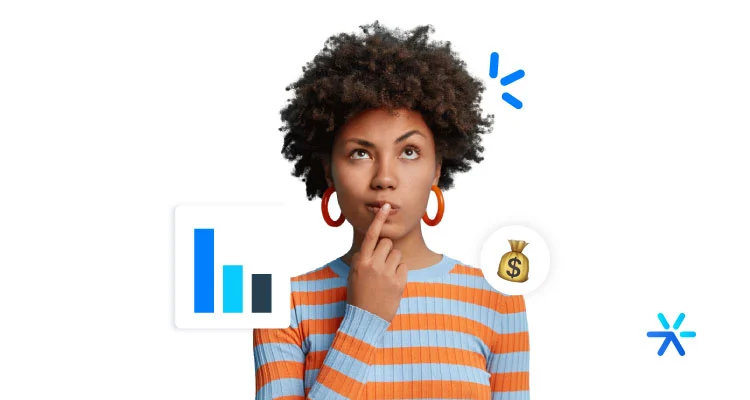
Lead qualification is essential for the success of your strategy and for focusing marketing and sales efforts and resources.
Understand in detail why investing in this now is crucial:
Increase Conversion Rates
If the sales team is working with contacts who have a higher purchase intent, this means that conversion rates will also be optimized.
Approaching potential customers at the right time significantly increases the chances of closing a sale or contract.
Reduce Costs and Increase Sales Efficiency
The sales team focuses its efforts on leads that are already better prepared to close a deal.
This means that sales time and resources are spent on consumers who are more likely to buy, allowing marketing time and resources to be better allocated to prepare leads that have not yet reached that stage.
Prevent and Reduce Churn
The churn metric monitors the loss of revenue or customers your company experiences.
Qualifying leads helps exclude bad contacts who are not a good fit for the solution or product your brand offers.
These contacts might close a deal with you, but they quickly become a problem, as they become dissatisfied and cause losses you want to avoid.
Frequently Asked Questions About Lead Qualification
Check out an FAQ with the most common questions regarding lead qualification.
You may find it interesting to review some of the terms and concepts we’ve covered throughout the article.
What Are the Best Tools for Lead Qualification?
Explore the tools that can assist with your lead qualification efforts.
Software such as CRM, automation platforms, lead scoring platforms, or conversational marketing platforms will enable your strategy and lead selection to be done in an automated, centralized manner that is easily visible to the entire team involved.
What Are the Most Common Mistakes in Lead Qualification?
Lead qualification may not have the desired results when companies make mistakes in the process.
The first mistake is a lack of methodology.
Without standardization, information is not collected properly, and qualification is based on “gut feelings.”
Another common mistake that hampers the entire sales funnel’s development is when the marketing and sales teams do not work together.
Having this interaction prevents rework, makes access to information easier, avoids leads in nurturing from being abandoned, and increases conversion results.
What Are the Risks of Not Qualifying Leads Correctly?
Companies that do not qualify their leads or do so incorrectly suffer from ineffective and impractical sales cycles, low conversion rates, increased churn rates, higher costs, and investments that may be poorly allocated.
How Do You Qualify a B2B Lead?
Active prospecting and pre-sales work are part of B2B lead qualification.
You should also define your ideal customer profile, choose the best methodology for your segment, research companies and decision-makers with the desired profile, and begin making contacts with qualification scripts and questions.
Tools such as Inbound Marketing and Conversational Marketing also boost lead generation for subsequent qualification of these contacts.
How Do You Qualify Outbound Leads?
And how do you qualify leads generated by outbound methods, like those gained through advertising, promotional actions, events, and public relations?
These leads may often be curious, and here the qualification maxim holds: understand the profile of each of these contacts.
Some information can be obtained directly when the lead converts.
Additionally, you can use marketing nurturing resources and pre-sales approaches to understand the maturity and purchase interest and qualify them just as you would inbound leads.
Do I Need a Team to Qualify Leads?
One solution to improving lead quality is to dedicate a team or even an SDR (Sales Development Representative) who handles lead qualification and scheduling for the sales team.
However, this is not the reality for all companies, especially smaller ones with reduced teams.
In this dynamic, it is the salesperson themselves who takes care of qualification.
For these cases, having a good nurturing and qualification process during the marketing strategy is even more effective so that the contacts reaching the sales team are already more educated about the solution.
What Is the Goal of Qualifying a Lead?
By qualifying a lead, you save your team time and effort when approaching the consumer.
In addition to boosting team productivity, lead qualification will help you: increase conversion rates, as you will be talking to users more likely to buy; reduce costs and improve efficiency, as you will no longer waste time and money on unqualified leads; and also prevent and reduce churn, as it excludes unqualified leads.
What Questions Should You Ask to Qualify a Lead?
Leadster has prepared content for you with 50 lead qualification questions—be sure to check it out.
But… here’s a light preview of what awaits you, with 5 questions that represent the main types of lead qualification.
Take a look!
- Geographical Qualification: “Where do you live?”
- Personal Qualification: “What is your job title?”
- Commercial Qualification: “Which of our products do you know?”
- Time and Money: “What is your urgency in hiring?”
- Decision-Maker: “What are your main success metrics?”
Prospecting and negotiating with customers is one of the most labor-intensive stages for the sales team and also one that offers a lower conversion rate, as many contacts generated as leads don’t evolve into a sale or contract.
To facilitate and focus your sales team’s efforts, invest in qualifying contacts before they are passed to the commercial team.
Explore automation and conversational marketing tools like those offered here at Leadster.
This way, in addition to facilitating the visitor’s service, you provide automated and personalized assistance, working more dynamically than with static forms.
By using chatbots and virtual assistants, you capture your lead’s data and begin qualifying the contact right from the start of the interaction.
